(1965 to 1972)
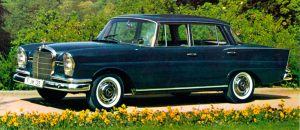
W 111/W 112 – W 108/W 109
The ‘fintail’ models introduced in 1959 (220, 220 S and 220 SE (W 111)) earned their nickname from the understated tail fins that adorned the rear wing. Owing to their function as a parking aid, they were also officially known as ‘sight lines’. The new high-end generation represented a very special milestone in automotive history, as this was the first time that the safety bodyshell with crumple zones devised by Béla Barényi had been used on a series production car. The flagship model presented in 1961, the 300 SE (W 112), was fitted as standard with air suspension and the newly developed automatic transmission from Mercedes-Benz, and its longer version in 1963 started off a tradition in luxury class saloons by Mercedes-Benz: the wheelbase, which was now 10 centimetres longer, offered rear passengers significantly more legroom and comfort. The 108 and 109 sedans, which replaced the 1965 ‘Fintail’, were characterised by a timelessly elegant design and large windows. In addition to the models fitted with conventional steel springs – referred to internally as the 108 series –, there was also an air-sprung variant of the model series 109, which was also available from the outset with a 10 cm longer wheelbase. Special highlights included the 300 SEL 6.3 presented in 1968. The new top-of-the-range model in the series was fitted with the high-performance V8 engine from the high-end Mercedes-Benz 600 sedan. In addition to exceptional comfort and luxurious interior fittings, it also rivalled the performance of a sports car.
Mercedes-Benz 220 b to 300 SE/300 SE long, W 111/W 112 (1959 to 1965)
- Passenger safety cell with crumple zones (front and rear)
- Padded steering wheel and interior appointments designed so as to reduce injury hazards in accidents
- Wedge-pin door locks featuring two safety detents
- Disk brakes (300 SE, from 1961)
- Dual-circuit braking system (from 1963)
- Four-speed automatic transmission (from 1961)
- Air suspension (300 SE, from 1961)
- Long version available (300 SE, from 1963)
- Central locking as special equipment (300 SE long)
Mercedes-Benz 250 S to 300 SEL 6.3, W 108/W 109 (1965 to 1972)
- Safety steering system (from 1967)
- Hydropneumatic compensating spring on rear axle
- Air suspension (300 SEL, 300 SEL 6.3, 300 SEL 3.5)
- Top-of-the-range 300 SEL 6.3 model with an output of 250 hp (184 kW), powerful V8 engine and sports car performance (from 1968)
(1963 to 1981)
The legendary type 600

One and a half years after the last 300 rolled off the production line in Sindelfingen in March 1963, a new top-of-the-range model from Mercedes-Benz made its debut at the International Motor Show in Frankfurt. The type 600 (W 100) was a superlative vehicle: its 6.3-litre V8 engine delivered an extremely respectable performance and a top speed in excess of 200 km/h. Optimum ride comfort was ensured by air suspension, an automatic transmission manufactured in-house and electronic power steering. Unique hydraulic comfort features enabled adjustment of the front seats and rear bench, opening and closing of the doors, boot lid and optional sliding roof, and opening and closing of the side windows. The five to six-seater version with a regular wheelbase of 3200 millimetres was predominantly ordered by highly discerning private customers. In addition, Mercedes-Benz also offered a seven to eight-seater version with a 70 cm longer wheelbase, which was primarily used as an official state or ceremonial limousine. In June 1981, the last of a total of 2,677 examples of the legendary luxury saloon was produced at the Mercedes-Benz plant in Sindelfingen. It was driven straight to Untertürkheim, where it was given pride of place in the company’s vehicle collection.
Mercedes-Benz 600, W 100 (1963 to 1981)
- Powerful, large-displacement V8 engine
- Four-speed automatic transmission
- Dual-circuit braking system with disk brakes
- Air suspension
- Power-assisted steering
- Central hydraulic system for seat adjustment, opening and closing doors, windows and luggage compartment
- Electronically-controlled heating and ventilation system
(1972 to 1980)
S-Class 116 model
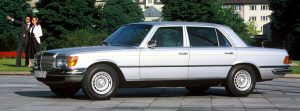
The name of the next-generation 116 launched in 1972 also reflected what had been on the agenda at Mercedes-Benz for decades: all luxury sedans with an ‘S’ in their model designation were now officially referred to as ‘S-Class’. The new designation went hand in hand with a whole bundle of innovations that set new standards in respect of safety and comfort. The comprehensive safety concept included a collision-proof fuel tank, a four-spoke safety steering wheel, dirt-deflecting side windows, larger headlamps, distinctive turn signal lamps and dirt-deflecting ribbed rear lamps. 1977 saw the dawn of the diesel age in the premium class with the 300 SD, although this was initially just in the North American markets. The luxury diesel was also the first series production car with a turbo-diesel engine.
From 1978, the S-Class was the first series production vehicle to be fitted with ABS (anti-lock braking system), which ensured that the vehicle would respond fully to the driver’s steering action even in an emergency braking situation. A global sensation, this ground-breaking innovation is now standard across all vehicle categories. The S-Class underlined its status as an automotive engineering benchmark and its model designation became a generic term for high-end vehicles.
Model series 116 (1972 to 1980)
- First official use of the ‘S-Class’ designation
- Integral safety concept
– four-spoke safety steering wheel
– tank above rear axle to protect it from collisions
– safety door handles
– generously sized headlamps and turn signal lamps
– dirt-deflecting taillights
– dirt-deflecting side windows - ABS (anti-lock braking system) as special equipment (from 1978)
- Cruise control as special equipment (from 1975)
- Double wishbone front axle
- Coupled-link axle with anti-squat control (450 SE, 450 SEL, 450 SEL 6.9)
- Automatic transmission with torque converter as special equipment (standard on 450 SE, 450 SEL, 450 SEL 6.9)
- Self-levelling hydropneumatic suspension (450 SEL 6.9, from 1975)
- First luxury class sedan with a diesel engine, first series production passenger car with a turbo-diesel engine (300 SD, from 1978)
- The 116 series, unveiled in 1972, was the first Mercedes-Benz luxury saloon to bear the S-Class name.
The new model series featured numerous innovations and defined the future look of the Mercedes-Benz passenger car.


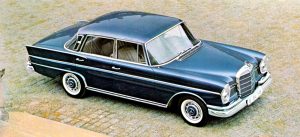
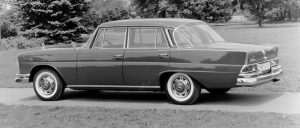

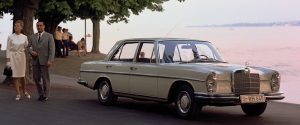
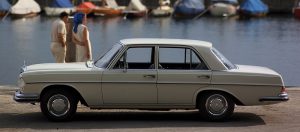
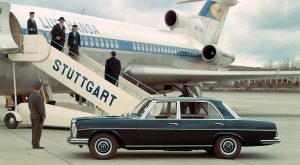
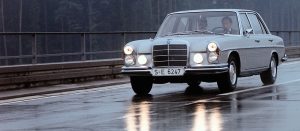
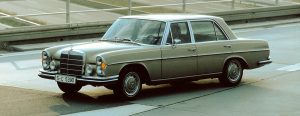


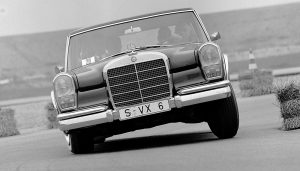

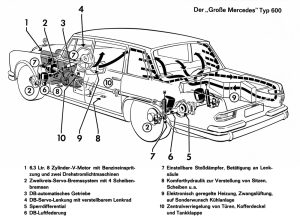
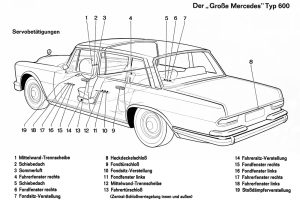
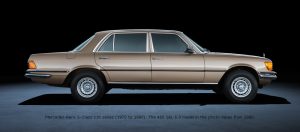
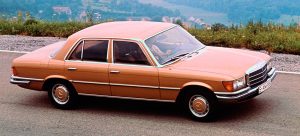
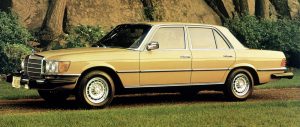
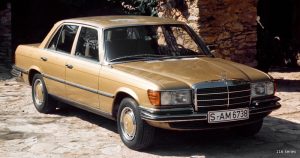
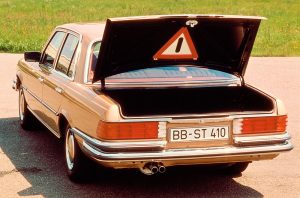
You must be logged in to post a comment.